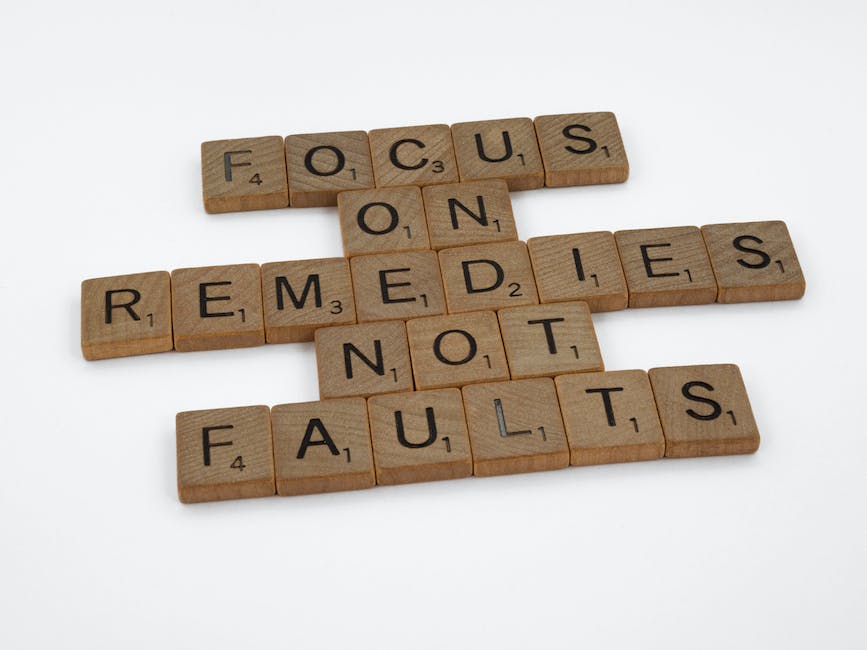In today’s fast-paced society, the balance between personal life and professional commitments – often referred to as work-life balance – has never been more crucial. The significance of maintaining this equilibrium extends beyond the realm of personal well-being alone. It impacts mental health, employee productivity, and overall morale within organizations. This critical discussion probes further into the influence work-life balance has on mental health, the vital role of corporate policies in promoting equilibrium, and offers practical tips for achieving a healthier work-life interface.
Impact of Work-Life Balance on Mental Health
Work-life Balance and Its Implications on Mental Health
Work-life balance is an essential element for mental health. It is the state of equilibrium where a person equally prioritizes the demands of one’s career and the demands of one’s personal life. Some of the common reasons associated that may ruin one’s work-life balance includes increased responsibilities at work, working longer hours, increased responsibilities at home, and not having enough time or opportunity for personal activities or self-care.
Research has shown that a poor work-life balance can result in high stress, unhappiness, and even reduced mental health. The American Institute of Stress reported that 80% of workers feel stress on the job and nearly half say they need help in learning how to manage stress. Harvard Business School surveyed 4,000 professionals, and found that 94% worked 50 hours or more a week, and almost half worked 65 hours or more.
Burnout: The Extreme Result of Imbalance
Employee burnout is often the direct result of a poor work-life balance. It’s a state of chronic stress that leads to physical and emotional exhaustion, cynicism, detachment, feelings of ineffectiveness and lack of accomplishment. The World Health Organization now recognizes burnout as an official syndrome linked to chronic workplace stress. The Gallup Study of nearly 7,500 full-time employees found that 23% of employees reported feeling burned out at work very often or always, while an additional 44% reported feeling burned out sometimes.
Connection to Depression and Anxiety
A poor work-life balance can also contribute to mental health conditions like depression and anxiety. An estimated one in six people in the past week experienced a common mental health problem, many of which can be attributed to work-related stress. Anxiety disorders are the most common type of mental illness in the U.S., affecting 40 million adults in the United States age 18 and older, or 18.1% of the population every year according to the Anxiety and Depression Association of America.
A study conducted by the Mental Health Foundation in the UK found that when working long hours, more than a quarter of employees feel depressed (27%), one third feel anxious (34%), and more than half feel irritable (58%). The increasingly blurred line between work and home life tends to exacerbate these issues, as people often find it difficult to ‘switch off’ and rest.
Exploring the Relationship Between Work and Mental Health
Work plays a complex role in our mental health, with its impacts varying based on the type of job, work culture, and individual factors like age, gender and socioeconomic status. It’s crucial for both employees and their employers to actively pursue a healthier balance between their jobs and personal lives. Achieving this balance might involve setting distinct work hours, regularly taking time to rest, prioritizing personal well-being, and encouraging a supportive atmosphere at work. Professionals in the mental health field can also provide strategies and treatments to those struggling with work-related stress and other issues affecting mental health.

Corporate Policies and Work-Life Balance
Shining a Light on Work-Life Balance
Work-life balance is the concept of finding a stable equilibrium between our work and other aspects of our life such as leisure, family, and personal growth. It’s vital for employers to not only understand the importance of work-life balance but also to promote it. Doing so brings numerous benefits for both the employees and the company. A key players in making this happen are employers themselves, as their attitudes towards work-life balance can significantly shape how professional and personal life harmonize with each other for their employees.
Flexible Working Hours
One of the main ways an employer can promote work-life balance is through the implementation of flexible working schedules. This practice allows employees to vary their arrival and departure, or even select the working hours that suit them best. Flexible working hours can be incredibly beneficial, particularly for employees with children, enabling them to drop-off or pick-up their kids from school, and attend school functions. Not being tethered to a strict 9-5 schedule can alleviate stress, boost morale, and improve productivity. Employers can demonstrate their trust in their employees by granting them the autonomy to manage their own time.
Remote Working Opportunities
With advancements in technology, remote working opportunities are becoming more common. Employers can promote work-life balance by providing their employees with the option to work from home or any other location. A significant benefit of remote working is that it eliminates commuting, which can save employees both time and money. This, in turn, can result in improved job satisfaction, lower stress, and increased employee retention. Furthermore, remote working options can also provide employees the freedom to tailor their environment to their liking, leading to increased productivity.
Work-Related Benefits
Employers can also enhance work-life balance by offering work-related benefits such as health and wellness programs, or employee assistance programs. These initiatives tend to increase job satisfaction and mitigate the impact of work-related stress. Moreover, they have the potential to improve productivity by promoting physical and mental health. Other benefits could include paid parental leave, child care support, or flexible vacation policies.
Impact on Employee Productivity and Morale
Research has consistently indicated a direct correlation between work-life balance and employee productivity, satisfaction, and overall morale. Employees who have control over their work schedules and location are typically happier, healthier, and more devoted to their job. They are likely to experience lower levels of stress and are less prone to burnout, leading to better performance overall. Thus, by embracing policies that promote work-life balance, employers are investing not only in their employees’ well-being but the success of the company as a whole.
Understanding the Employer’s Work-Life Balance Approach
The significance of an employer’s approach to work-life balance is multifaceted and can’t be underrated. It requires a thoughtful combination of creativity and understanding to develop a working environment that values the employee’s professional and personal life. When a delicate balance is achieved, the rewards are reciprocal; the employees are satisfied and more productive, and the organization, in turn, excels.

Tips for Achieving Better Work-Life Balance
Mastering Time Management for Better Work-Life Balance
One fundamental way to achieve a healthy work-life balance lies in mastering effective time management. It is essential to prioritize tasks by identifying their urgency and importance, delegating when needed. Embrace the various tools and technologies available that can help you manage your daily tasks with greater efficiency.
Things like a pen-and-paper planner or digital calendar and organizational mobile apps aren’t just extras, they’re useful for keeping track of task completion deadlines. Visualizing the distribution of time dedicated to various activities can positively change outcomes. Explore techniques like the Eisenhower Box—a four-quadrant matrix that helps categorize tasks based on their urgency and importance—it can be a game-changer if utilized correctly.
Setting Work Boundaries
Establishing clearly defined work boundaries is another important step towards work-life balance. It’s critical to set strict start and end times to your workday, avoid taking work home, and discourage after-hours email checks or calls.
Communicating your work boundaries to your coworkers, clients, and superiors can make sure they respect your personal time, while automating responses and utilizing do not disturb settings on electronic devices also aid in reinforcing these boundaries.
Incorporating Physical Activity and Relaxation Into Daily Routines
Physical activity and relaxation should become a part of daily routines due to their significant benefits on physical health, mental well-being, and stress reduction. Integrating simple things like taking regular breaks from the computer for light stretching or walking, practicing exercise routines or yoga, having a healthy diet can increase productivity and feelings of satisfaction.
Additionally, relaxation activities like pleasure reading, mindfulness meditation, or engaging in a hobby can rejuvenate your mind and body, making you more equipped to handle work pressures. These practices may be scheduled into your day to ensure they are not neglected due to work demands.
Professional Help for Work-life Balance
In situations where achieving work-life balance seems increasingly difficult, seeking professional help should be considered. Professionals such as therapists or life coaches have the expertise to guide individuals on how to manage stress, cope with work-related pressures, and devise personalized strategies for achieving a healthier work-life balance.
Organizations may also offer resources like employee assistance programs which provide support for a broad range of personal or work-related issues. Therapists and mental health professionals are equipped to deal with issues like burnout, anxiety, and depression which may arise from an imbalanced work-life situation.
Ultimately, the quest for a better work-life balance is a continuous one and requires consistent efforts and adjustments as the demands of work and life change over time. However, with dedicated action in time management, maintaining work boundaries, sticking to health and relaxation activities, and seeking professional help when necessary, a balanced work-life scenario is achievable.

The journey towards achieving a stable work-life balance is an ongoing one, requiring consistent effort and conscientious adjustments. No blueprint fits all as each individual’s circumstances differ. However, by prioritizing efficient time management, setting clear work boundaries, incorporating physical activity, and adhering to relaxation routines, it is feasible to navigate towards a healthier and happier lifestyle. Corporations, too, hold a pivotal role in this journey, with their policies significantly impacting their employees’ well-being. Healthy employees are more productive, happier, and contribute greatly to the positive growth of any organization. The profound effects a balanced approach to life has on mental health cannot be overstressed, underscoring the importance of this pursuit for both employees and employers alike.

